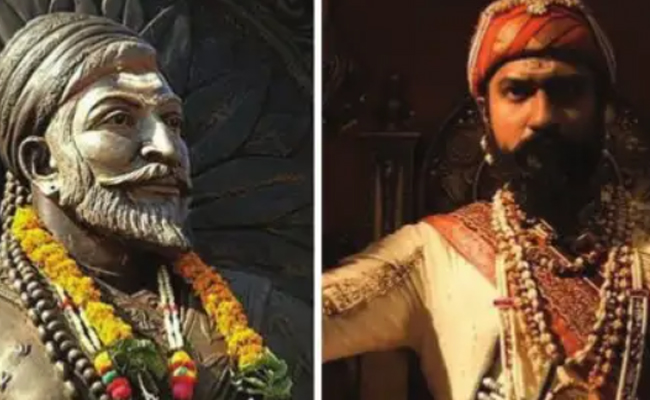
India News

A perplexing aspect of our national history is that there are so many different narratives floating around, mixing facts with mythology, leaving little room for the average person to distinguish between what’s historically true and what’s based on imagination. The line between history and mythology often gets blurred, with diverse stories interwoven in the fabric of our culture. This issue has become a point of contention recently, particularly with the release of movies like Chhava, which have sparked intense debates about Maratha kings’ legacies.
In the current climate, these discussions are closely linked with politics, with social media users arguing fiercely about the portrayal of these figures. If you agree with one version, you're accused of being aligned with a particular ideology, and if you disagree, you're labeled as a traitor. This sharp polarization leaves little room for rational debate, where historical facts should ideally be the basis for discussions.
Throughout history, different perspectives exist even when examining several centuries’ worth of events. It’s not just the facts we learn from history books that are true; there are many interpretations of those facts, and no single version can be entirely accurate. For instance, if we take the case of the Telugu kings, particularly the time of Sri Krishnadevaraya and his Ashtadiggajas (eight famous scholars), many believe that the group may not have been exclusively from his reign. Although the reign lasted for over 20 years, during which constant warfare was common, the notion of Ashtadiggajas and their contributions to literature is still open to debate. Some scholars argue they may have belonged to a different era, but the larger picture is that our understanding of history is often shaped by our beliefs and ideals.
Let’s look at some examples from history. When we examine foreign travelers’ accounts during the rule of various Indian kings, their writings are often considered primary sources of historical knowledge. Yet, these documents too are filtered through the perspectives of the writers, shaped by their own biases.
Shivaji’s History and Myth
Shivaji's story itself is an example of how history and myth can coexist. Born in 1630 and dying in 1680, Shivaji’s reign was marked by military campaigns, political strategies, and a commitment to maintaining his kingdom's independence. However, for nearly two hundred years after his death, very little was documented about his life or his reign. It was only in the 19th century, thanks to social reformers like Jyotirao Phule, that Shivaji’s legacy was revived in popular consciousness.
Phule, through his writings and speeches, resurrected Shivaji’s image, bringing attention to his leadership and the challenges he faced. Without Phule’s efforts, it’s possible that Shivaji might have faded from memory like many other rulers of the time. However, this revived interest led to the proliferation of myths and fictionalized stories about him, which continue to influence the public's understanding of his legacy.
One such myth is that of the sword of Goddess Kali. According to certain narratives, Kali herself bestowed a sword upon Shivaji, a weapon he used in his conquests. Stories like this, blending spirituality with political history, are common when discussing historical figures who are seen as larger-than-life.
Sambhaji and His Role in Maratha History
Sambhaji, Shivaji’s son, also became a figure steeped in myth and history. His short reign lasted only eight years, but it was marked by constant struggles against the Mughals. After Shivaji's death, there were conflicts within his family over succession, and Sambhaji’s reign began under difficult circumstances. He faced a betrayal by his own stepmother, Soyarabai, who attempted to poison him in a bid to place her own son, Rajaram, on the throne. Sambhaji survived the poisoning but had to deal with family tensions and political struggles throughout his rule.
Sambhaji's reign ended in a brutal fashion, as he was captured by the Mughal Empire, tortured, and executed. This event further cemented his place in history as a martyr for the Maratha cause. But much like his father, Sambhaji’s story has been retold in various ways, sometimes focusing on his heroism, at other times on the myths surrounding his personal life.
History and Politics: A Complex Relationship
The complexities of history become even more apparent when you consider the political climate of different periods. For example, during British colonial rule, the figure of Bahadur Shah Zafar, the last Mughal emperor, was revived as a symbol of resistance during the 1857 uprising. Despite the fact that he was a Mughal ruler, the rebels of the time, most of whom were Hindus, rallied around him as a figurehead in their struggle against British rule. This shows that political needs often outweigh religious or cultural divides when it comes to historical narratives.
Similarly, the Maratha-Mughal conflict, while deeply rooted in religious differences, was also shaped by broader political and territorial goals. The Marathas fought to defend their autonomy, while the Mughals sought to expand their empire. The idea that these conflicts were driven purely by religious motivations oversimplifies the complex dynamics at play.
Conclusion: The Blurred Lines of History and Myth
The stories of Shivaji, Sambhaji, and other historical figures have been passed down through generations, often shaped by the cultural and political context of the time. While there is no denying their historical significance, the myths and legends that surround them add layers of complexity to our understanding of their lives and legacies. The challenge, as we navigate through these narratives, is to recognize the fine line between history and mythology, while understanding that both can serve as powerful tools for shaping collective identity and national consciousness.
In the end, what history teaches us is that it is not just about dates and events, but also about the stories we tell to make sense of the past and how those stories continue to shape our present and future.
Advertisment